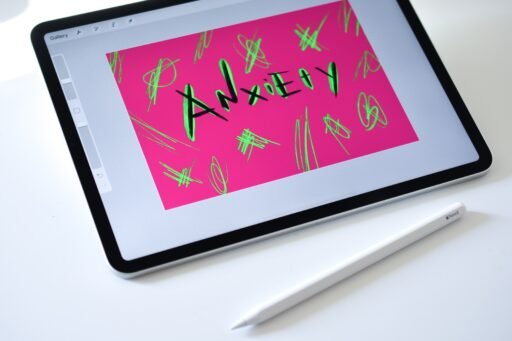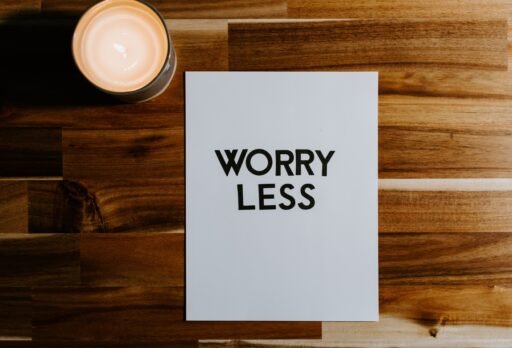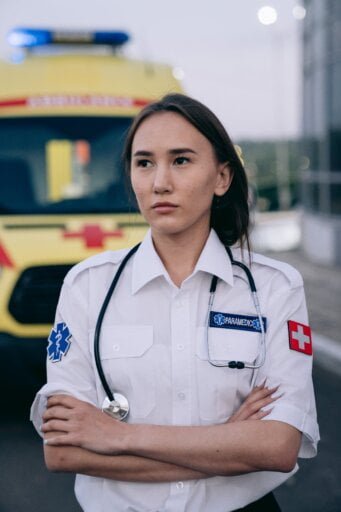You’re not alone if anxiety has ever made your skin break out in a rash. This article will give you a comprehensive understanding of what anxiety rashes look like, helping you identify and navigate the physical manifestations of this common mental health condition. By exploring the different types of anxiety rashes and their distinct characteristics, you will gain insight into the impact anxiety can have on your skin. Whether you’re seeking validation or looking for ways to manage these rashes, this article “What Do Anxiety Rashes Look Like” aims to provide empathic support and guidance for anyone dealing with anxiety-induced skin reactions.
Causes of Anxiety Rashes
Stress and Anxiety
Anxiety rashes can be triggered by high levels of stress and anxiety. When you experience stress, your body releases hormones such as cortisol, which can affect your skin’s immune system. This immune response can lead to inflammation and cause rashes to appear. The connection between stress and skin conditions is well-known, and anxiety rashes are no exception.
Allergic Reaction
Another common cause of anxiety rashes is an allergic reaction. In some cases, individuals with anxiety may have hypersensitivity to certain allergens, such as pollen, pet dander, or certain foods. When exposed to these triggers, the body’s immune system reacts, leading to the release of histamines and other chemicals that cause the skin to become inflamed and develop a rash.
Psychological Factors
Psychological factors can also contribute to the development of anxiety rashes. Feelings of anxiety, worry, and fear can trigger a response in the nervous system, causing the release of stress hormones. These hormones can disrupt the normal functioning of the skin, leading to the development of rashes. Additionally, individuals with anxiety may engage in behaviors such as excessive scratching or picking at the skin, which can further exacerbate the rash.
Physical Symptoms
Redness and Rash
Anxiety rashes typically present as areas of redness on the skin. The rash may be localized or spread across larger areas of the body. The intensity of redness can vary from mild to severe, depending on the individual and the underlying cause of the anxiety. The skin may appear inflamed and may feel warm to the touch.
Itching and Irritation
Anxiety rashes often come with intense itching and irritation. This itching can be relentless and may lead to a continuous cycle of scratching, which further aggravates the rash. The skin may feel rough and bumpy, and scratching can cause the rash to spread or become more inflamed.
Dry and Flaky Skin
In addition to redness and itching, anxiety rashes can also cause dry and flaky skin. The skin may feel rough, scaly, and tight. This dryness can be uncomfortable and may worsen the appearance of the rash. It is important to keep the affected skin moisturized to prevent further dryness and irritation.

Types of Anxiety Rashes
Hives (Urticaria)
Hives, also known as urticaria, are a common type of anxiety rash. They appear as raised, itchy welts on the skin that vary in size and shape. Hives can be triggered by stress, anxiety, or allergic reactions. They tend to come and go quickly and may disappear within a few hours or days. However, in some cases, hives can persist for longer periods, known as chronic urticaria.
Eczema (Atopic Dermatitis)
Eczema, or atopic dermatitis, is a chronic skin condition that can be aggravated by anxiety. It presents as dry, itchy, and inflamed patches of skin. The affected areas often appear red, scaly, and may even ooze or crust over. Eczema rashes can be triggered by stress and may worsen during periods of heightened anxiety.
Psoriasis
Psoriasis is a chronic autoimmune condition that can be triggered or aggravated by anxiety. It causes the rapid turnover of skin cells, leading to the formation of thick, red patches with silvery scales. Psoriasis commonly affects the scalp, elbows, knees, and lower back. Stress and anxiety can trigger flare-ups and make existing symptoms worse.
Rosacea
Rosacea is a chronic inflammatory skin condition that primarily affects the face. It is characterized by redness, visible blood vessels, and small, pus-filled bumps. Anxiety and stress have been identified as triggering factors for rosacea flare-ups. The condition can be emotionally distressing, as it often affects an individual’s self-esteem and confidence.
Distinguishing Anxiety Rashes from Other Skin Conditions
Hives vs. Dermatitis
Distinguishing between hives and dermatitis can be challenging, as they can share some similar symptoms. However, hives are typically raised welts that come and go quickly, while dermatitis often presents as dry, scaly patches of skin. Hives are also more commonly associated with allergic reactions, whereas dermatitis can have various triggers, including stress and anxiety.
Eczema vs. Psoriasis
Eczema and psoriasis can both cause red, scaly patches of skin, making it difficult to differentiate between the two. However, eczema often appears as patches that are more pink or red and typically affects the creases of the body, such as behind the knees and in the elbow folds. Psoriasis, on the other hand, tends to have thicker, silvery scales and can affect various areas of the body, including the scalp.
Rosacea vs. Acne
Rosacea and acne can sometimes be mistaken for each other due to their similar appearance. However, there are a few key differences. Rosacea typically causes persistent redness, visible blood vessels, and small bumps that may be pus-filled. Acne, on the other hand, often presents with whiteheads, blackheads, and larger, inflamed pimples.

Treatment and Management
Topical Steroids and Antihistamines
Topical steroids and antihistamines are commonly used to manage the symptoms of anxiety rashes. Topical steroids can help reduce inflammation and itching, providing relief for the affected areas. Antihistamines, whether topical or oral, can help relieve itching and reduce the body’s allergic response. It is important to consult with a healthcare professional before using any medications.
Moisturizers and Emollients
Keeping the skin well-moisturized is crucial in managing anxiety rashes. Moisturizers and emollients can help soothe dry, itchy skin and prevent further irritation. Look for products that are fragrance-free, hypoallergenic, and suitable for sensitive skin. Regular application of moisturizers throughout the day can provide ongoing relief.
Therapy and Cognitive Behavioral Techniques
In addition to medication and skincare, therapy and cognitive behavioral techniques can be beneficial in managing anxiety rashes. Therapy, such as cognitive-behavioral therapy (CBT), can help individuals identify and address the underlying factors contributing to their anxiety. Stress management techniques, relaxation exercises, and mindfulness practices can also be incorporated to reduce anxiety and improve overall well-being.
Prevention and Coping Strategies
Stress Management
Effective stress management is crucial in preventing and managing anxiety rashes. Engaging in activities that reduce stress, such as exercise, meditation, or hobbies, can help alleviate anxiety symptoms and minimize the risk of rashes. It is also important to establish healthy boundaries, prioritize self-care, and practice effective time management.
Identifying Triggers
Identifying triggers that contribute to anxiety rashes is essential for prevention. Keeping a journal can be helpful in tracking patterns and identifying potential triggers, whether they are specific situations, people, foods, or lifestyle factors. By understanding these triggers, individuals can proactively avoid or minimize exposure to them, reducing the likelihood of anxiety rashes.
Self-Care and Relaxation Techniques
Practicing self-care and relaxation techniques on a regular basis can significantly improve the management of anxiety rashes. Engage in activities that promote relaxation and emotional well-being, such as taking warm baths, practicing deep breathing exercises, using calming essential oils, or engaging in creative outlets like painting or journaling. Taking time for oneself and prioritizing relaxation can have a positive impact on overall skin health.
When to Seek Medical Help
Severe Symptoms
If you experience severe symptoms with anxiety rashes, it is important to seek medical help promptly. Severe symptoms may include intense itching that is not relieved by over-the-counter treatments, widespread rashes that affect multiple areas of the body, or symptoms that significantly impact your daily life. A healthcare professional can provide a proper diagnosis and recommend appropriate treatment options.
Chronic or Recurring Rashes
If your anxiety rashes persist or continue to recur despite your best efforts in managing them, it is advisable to consult with a healthcare professional. They can evaluate your symptoms, assess for any underlying medical conditions, and develop a targeted treatment plan to address your specific needs.
Impact on Daily Life
When anxiety rashes begin to impact your daily life, causing significant distress, interfering with your ability to work or engage in social activities, professional help should be sought. Mental health professionals can provide support, guidance, and therapeutic interventions to help manage anxiety and its physical manifestations.
Case Studies
Sarah’s Experience with Anxiety Rashes
Sarah, a 32-year-old marketing executive, experienced anxiety rashes whenever she faced high-pressure situations at work. The stress and pressure would often trigger red, itchy rashes on her neck and chest. Through therapy and stress management techniques, Sarah learned to identify and address the underlying causes of her anxiety. By developing coping strategies and using prescribed topical medications, she was able to successfully manage her anxiety rashes and minimize their occurrence.
John’s Journey in Managing Anxiety Rashes
John, a 45-year-old teacher, struggled with chronic anxiety rashes for several years. Despite trying various over-the-counter treatments, his rashes continued to flare up, causing significant discomfort and impacting his self-confidence. Seeking medical help, John received a proper diagnosis and treatment plan that included a combination of topical medications and psychological therapy. Through medication management and the adoption of relaxation techniques, John was able to gain control over his anxiety rashes and improve his overall well-being.
Conclusion What Do Anxiety Rashes Look Like
Understanding anxiety rashes is crucial for individuals who experience these skin conditions. Stress, allergic reactions, and psychological factors can all contribute to the development of anxiety rashes. By recognizing the physical symptoms and distinguishing anxiety rashes from other skin conditions, individuals can seek appropriate treatment and management strategies. Seeking professional advice, identifying triggers, practicing self-care, and implementing stress management techniques are all essential in preventing or minimizing anxiety rashes. Remember, if your symptoms are severe, chronic, or impacting your daily life, seeking medical help is important for proper diagnosis and treatment. By addressing anxiety and its physical manifestations, individuals can improve their overall well-being and quality of life.
Frequently Asked Questions:
Q1: How do I know if I have an anxiety rash?
“Anxiety rashes often present as red, raised, or blotchy patches on the skin. If you notice such changes concurrent with heightened stress, it could be indicative of an anxiety-related rash.”
Q2: How long can a stress rash last?
“The duration of a stress rash varies, but it typically resolves once stress levels decrease. If the rash persists, consulting a healthcare professional is advisable for a comprehensive evaluation.”
Q3: How do you get rid of a stress rash?
“Managing stress through relaxation techniques, proper skincare, and, if necessary, over-the-counter creams can contribute to alleviating stress-related rashes.”
Q4: Is a stress rash hot to touch?
“A stress rash may feel warm or hot to the touch due to increased blood flow to the affected area. Monitoring any changes in temperature can provide additional insights.”
Q5: Is an anxiety rash itchy?
“Yes, anxiety rashes can be accompanied by itching. Scratching should be avoided, as it may exacerbate the condition. Calming lotions or antihistamines can provide relief.”
Q6: What do stress bumps look like?
“Stress bumps often appear as small, raised areas on the skin. They may be red or pink and can cluster together, creating a bumpy or textured appearance.”
Q7: Can emotional stress cause rashes?
“Emotional stress has been linked to various skin conditions, including rashes. The body’s response to stress can manifest externally, highlighting the mind-skin connection.”
Q8: Why am I suddenly getting stress rashes?
“Sudden stress rashes can be triggered by heightened emotional states. Identifying stressors and implementing stress management techniques may help alleviate these reactions.”
Q9: When should I stop worrying about a rash?
“While many rashes are benign and resolve on their own, persistent or worsening symptoms should prompt a consultation with a healthcare professional to rule out underlying conditions.”
Q10: What color is a stress rash?
“A stress rash may exhibit various colors, commonly red or pink. The coloration can vary based on skin tone and individual factors.”
Q11: How common are stress rashes?
“Stress rashes are relatively common, as stress can impact the skin’s health. Seeking stress reduction strategies and maintaining good skincare practices can be preventive measures.”
Q12: Can lack of sleep cause skin rashes? “
Yes, inadequate sleep can contribute to skin issues, including rashes. Prioritizing sufficient sleep is crucial for overall skin health and well-being.”
Sources:
- Source 1. What Do Anxiety Rashes Look Like
- Source 2. Anxiety
- Source 3. Anxiety Treatment
- Source 4. Anxiety Symptoms
- Source 5. Anxiety Medication

